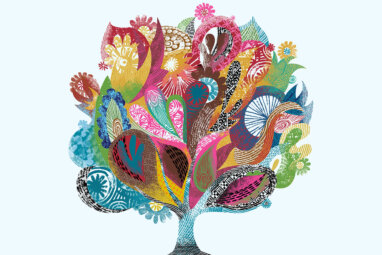Women Are Stalling Out on the Way to the Top
Here’s what we’ve learned from 40 years of data on executives in the largest U.S. corporations.

Kotryna Zukauskaite/theispot.com
A decade ago, we were poised to make serious progress: Employers started showing considerable interest in both measuring and improving gender diversity. They dug into the analytics and kicked off initiatives with hopes of turning the numbers around — only to shelve a lot of those efforts during the COVID-19 pandemic, when many companies struggled to stay afloat. As those that have survived begin some kind of restart, they face an exceedingly tight labor market where employees have no shortage of career options. So now is a good time to assess where we are in the advancement of women — particularly in the most visible leadership roles in our biggest businesses, where inequities can be clearly seen.
To do so, we’ve analyzed the career histories and demographics of the executives in the 10 highest-ranking jobs in Fortune 100 companies during the past 40 years. We began the project in 2001 and looked back to 1980 as the baseline, given the evidence that the wave of organizational restructuring that followed the 1981 recession marked a turning point in career advancement generally. Since then, we have checked in on who has these top jobs every 10 years, gathering detailed biographical information about 4,000 executives.1
Gender representation has certainly improved, because there was nowhere to go but up: Not one woman held any of the top 1,000 jobs in 1980. Since then, women have actually advanced more quickly than their male counterparts into executive positions. But they remain largely stuck in support functions rather than moving into key operating roles. At the oldest companies, women’s numbers are backsliding even in those functional jobs.
So organizations seeking gender diversity at the top still have a lot of work to do.
References (8)
1. Research reported in this article was partially funded by the Spanish Ministry of Economy and Competitiveness (MCIU), State Research Agency (AEI), and European Regional Development Fund (ERDF), Grant No. PGC2018-098767-B-C22.
2. “Women in the Labor Force: A Databook,” U.S. Bureau of Labor Statistics, April 2021, www.bls.gov.




